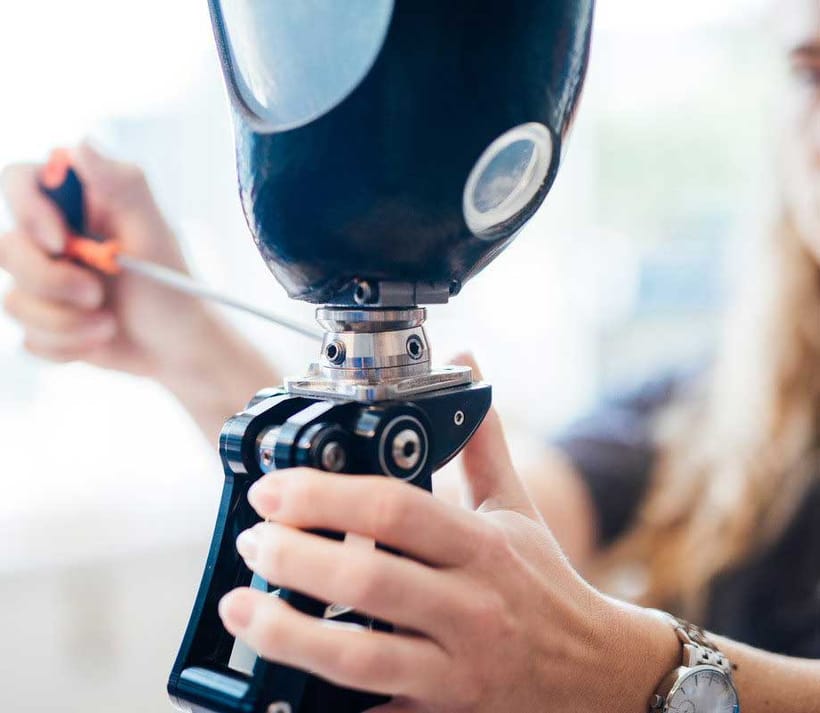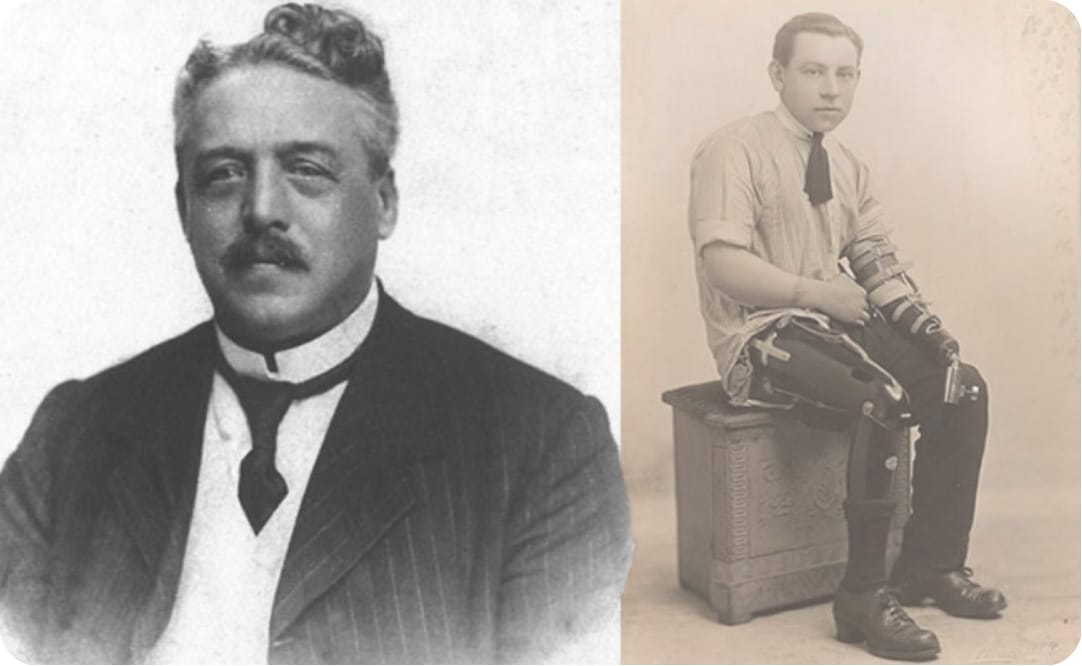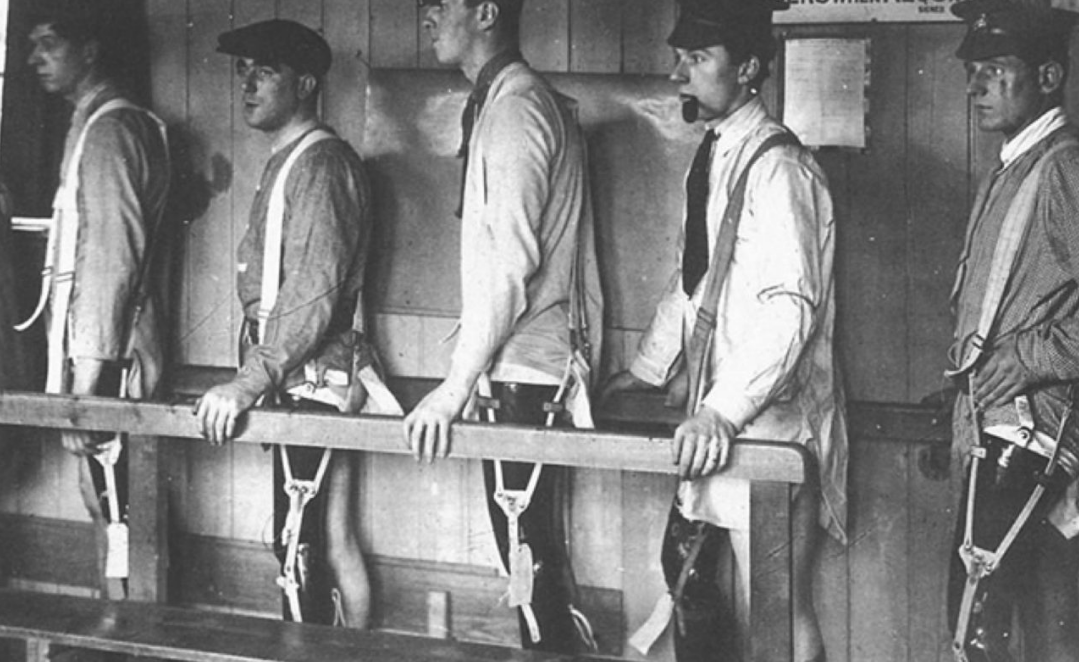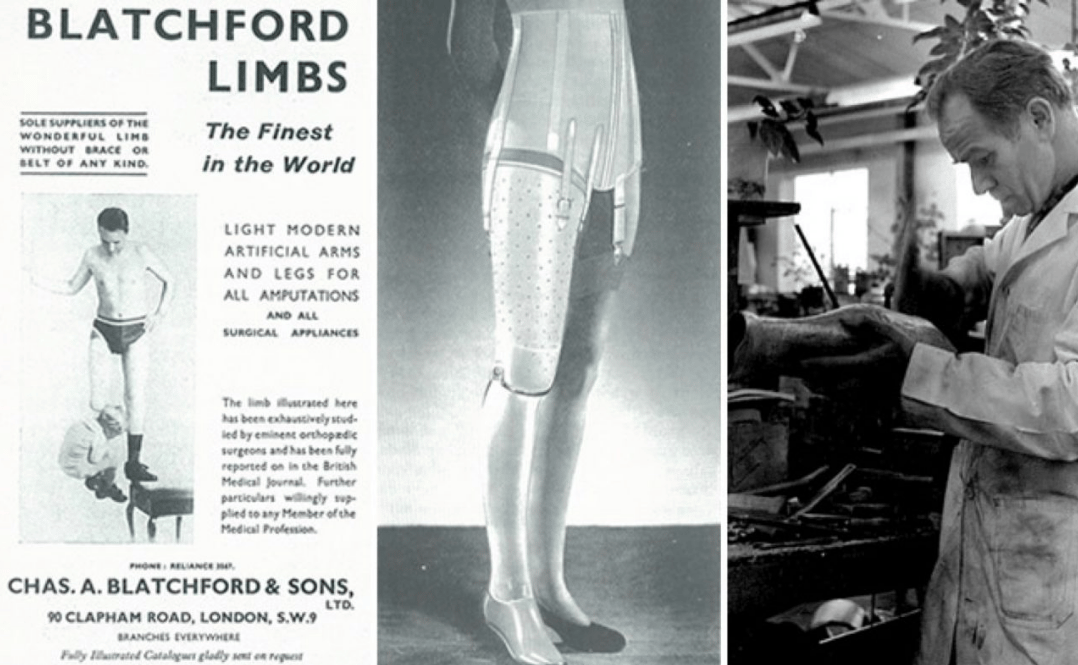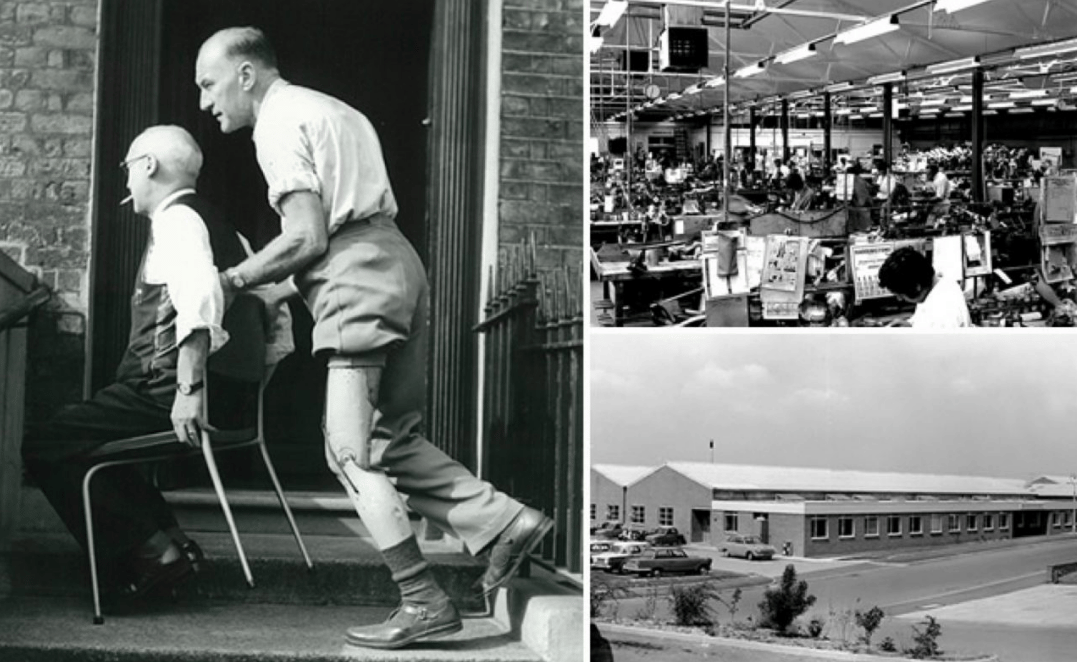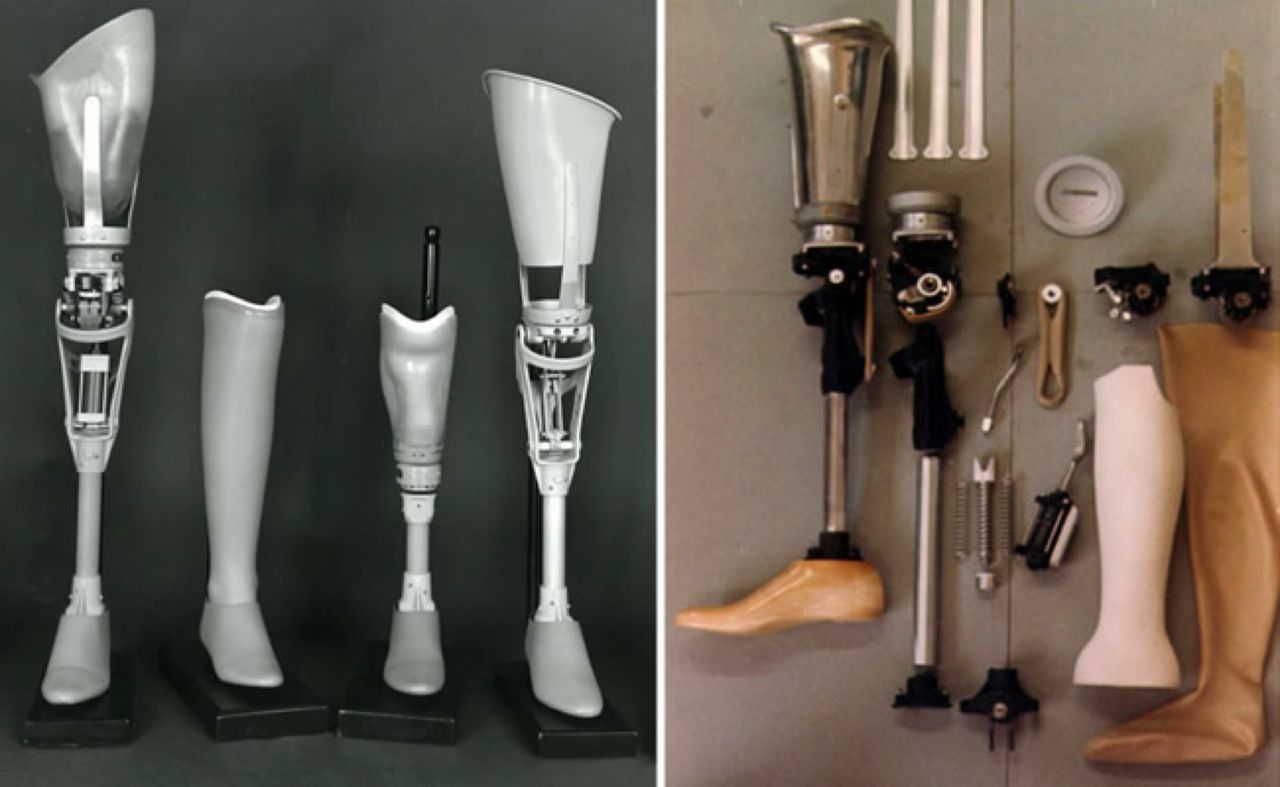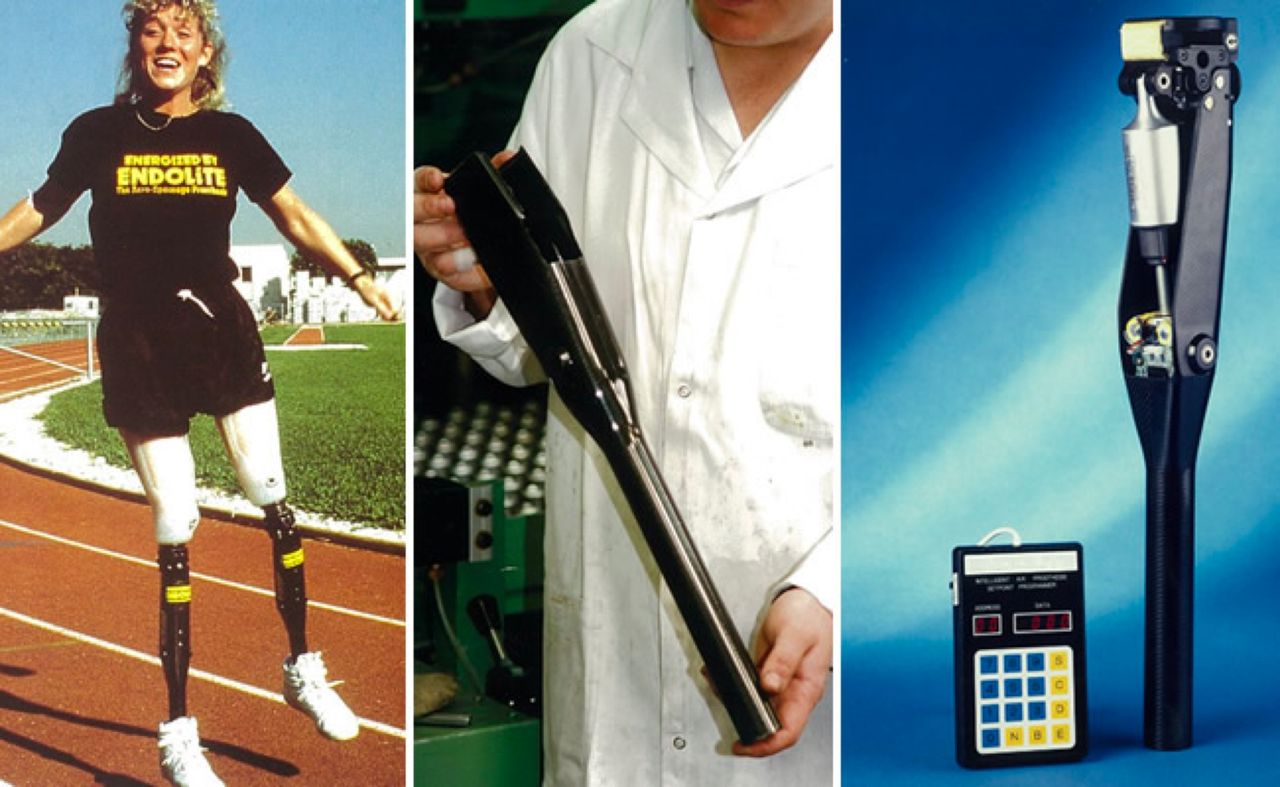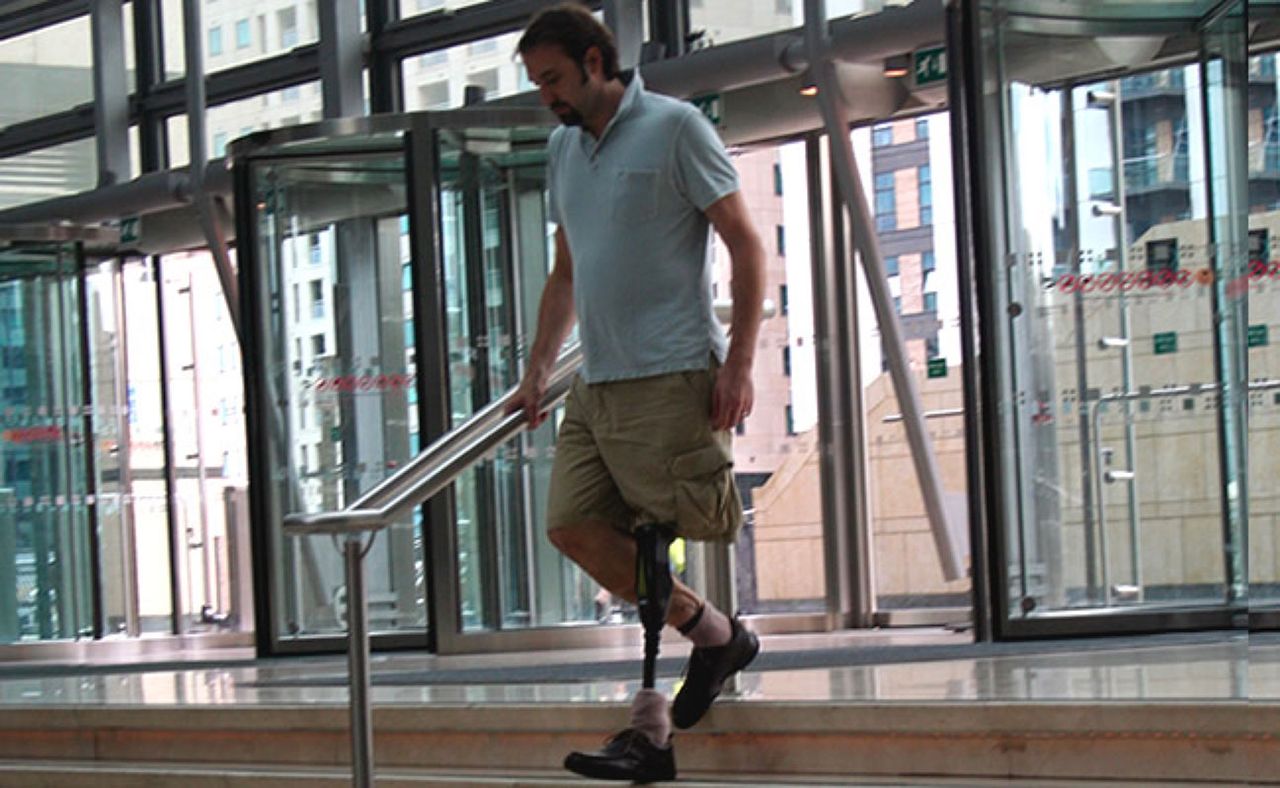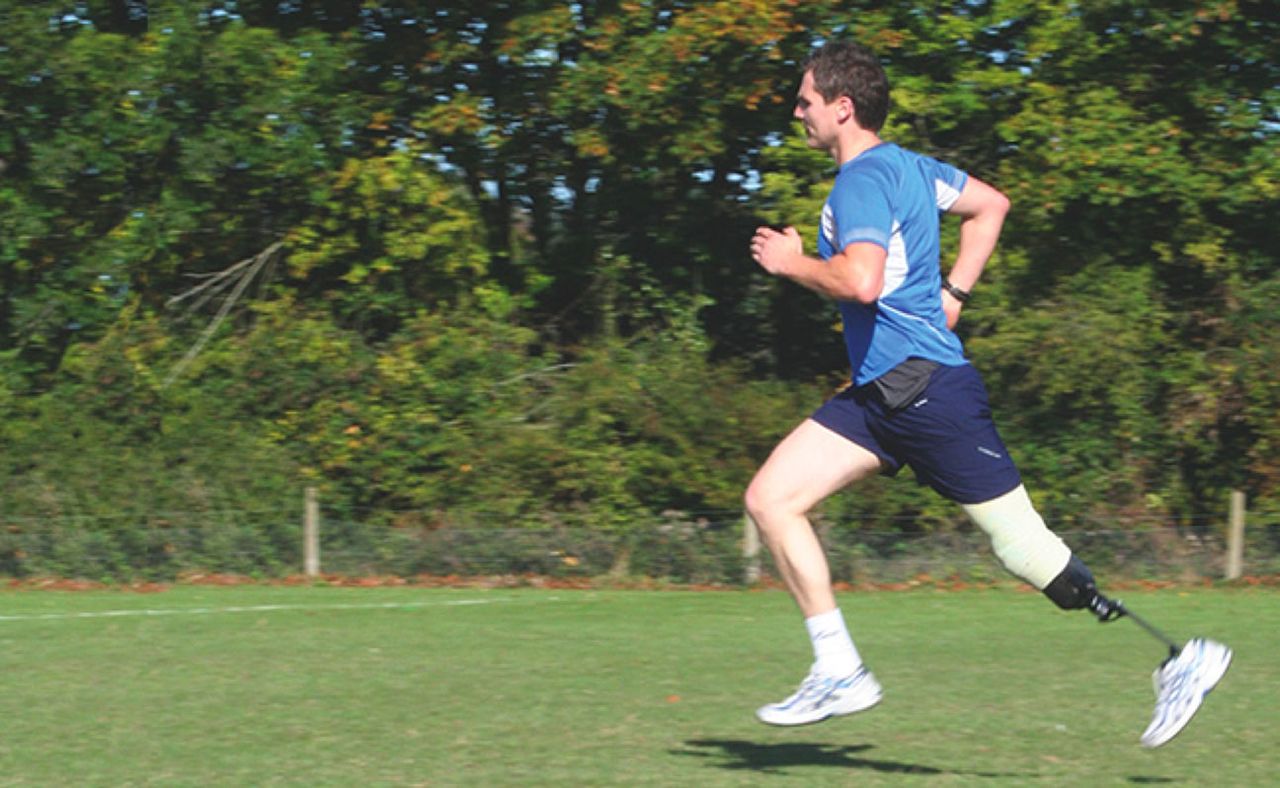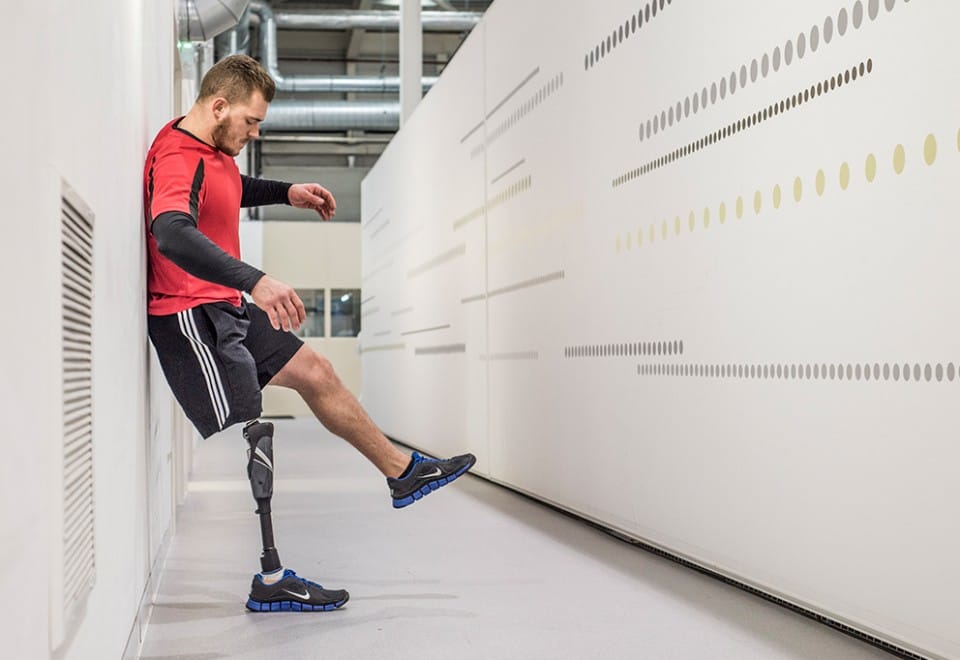Our History
Curious to learn more about the oldest global
prosthetics manufacturer in the world?
Order "Best Foot Forward" by Chas A. Blatchford & Sons Ltd, (Artificial Limb Specialists), 1890-1990
Our Heritage
Founded in 1890, we have built a global reputation as a developer, innovator and provider of lower-limb prosthetics and orthotic products. Blatchford responded to the mobility needs of young active returning World War II amputees by concentrating development on a prosthetic knee that allowed for stabilised weight-bearing and flexion when walking. The knee, known as the Blatchford Stabilised Knee, became popular worldwide and established Blatchford as an industry leader in prosthetic innovation.
Endolite®, a part of Blatchford, was the first to develop carbon fibre prosthetics using materials developed by the aircraft industry. This technology made it possible for Endolite to create light, high-strength prosthetic designs that passed and exceeded ISO standards for limb components. It also paved the way for the development of flexible feet and shin elements that create additional energy return to enhance walking and sports activities.
Blatchford has continued to develop increasingly sophisticated and successful prosthetics including the Blatchford Modular Assembly Prosthesis, winner of The Queen’s Award and Design Council Award, and the Carbon Fibre System that have set industry standards.
A three-time winner of Queens Awards for Technological Achievement, the Prince of Wales Award for Innovation and a Millennium Products Award, Blatchford hold patents for many of our prosthetic components and continue to concentrate on enhancing the quality of life for those with limited mobility.
Blatchford remains committed to creating the future of mobility with the use of computer-controlled micro-processors to achieve the smoothest possible gait pattern.
Early years from 1890

The Anglesey or Clapper Leg was developed for the First Marquess of Anglesey in 1816 after he lost a limb during the Battle of Waterloo the previous year. The latter name was given for the noise it made on full extension!
This leg was a feature of Blatchford clinical provision when the company was founded by Chas A. Blatchford in London in 1890.
First World War

The outbreak of war in 1914 and the resulting huge number of casualties returning to Great Britain meant there was an increased need for upper and lower limb prosthetic components. The war acted to stimulate development of artificial limbs including improvements in design, quality and production.
Second World War & the NHS

During the Second World War, W. A. Blatchford was involved in discussions with the Ministry of Pensions to determine how best to provide for the needs of air raid casualties and the war wounded returning home.
After the founding of the NHS 1948, the company was directed to concentrate on providing lower limb prosthesis and Blatchford has been a provider of prosthetic services to the NHS since its inception.
1950s & 60s

The need for better limb controls became more apparent after World War II with the huge increase in young active amputees. Blatchford development resources concentrated on a new knee that would stabilise during weight bearing but swing freely during walking, thereby allowing a natural walking pattern. Called the Blatchford Stabilised Knee, this device was to become popular worldwide.
Blatchford was also outgrowing it’s London offices and needed space to grow and more room to increase production to meet demands. In early 1960, the Board started the process of looking for locations outside London and by the late-60s the new company head office and factory was open on Lister Road in Basingstoke – a site that Blatchford still owns and operates today, although the headquarters have since moved a few miles down the road!
1970s

Designed by Brian Blatchford, the Modular Assembly Prosthesis (MAP) was the first UK modular system. It allowed the assembly of a prosthesis from a series of stock components. Finally large numbers of amputees could be fitted within a reasonable time scale. The company won a series of awards, including The Queen’s Award and Design Council Award, for this successful innovation.
1980s
More Awards followed as Blatchford changed the nature of prosthetic components by developing the world’s first carbon fibre prosthetic system, named Endolite®, using materials developed for the aircraft industry. This technology promoted light, high strength designs that passed the new ISO standards for limb components. The innovation paved the way for the future development of flexible feet and shin components that would allow energy return to enhance walking and sports activities.
1990s

In 1990 Blatchford began development of the first commercially available microprocessor controlled prosthetic knee in the world. The Intelligent Prosthesis (IP) programmed to each individual user to achieve the smoothest, energy saving gait pattern was soon followed by a unique hybrid pneumatic/hydraulic microprocessor controlled knee, able to detect ramps, stairs and speed and respond accordingly. Another innovation during this period was an injection moulded volume limb system for large scale use in developing countries, a waterproof version, the Aqualimb continues to be popular.
2000s

The 2000s were an exciting period of development within Blatchford with innovative output of feet, ankles and knees. Knees included the KX06, a one-off linkage and hydraulic control hybrid, that enables smoother gait.
Foot developments meant another dramatic development with the Echelon foot providing fluid ankle motion using a hydraulic foot/ankle in combination with independent eCarbon spring heel and toe action.
Today
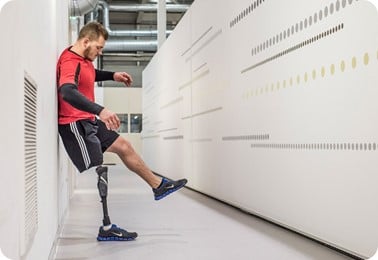
The success of the Echelon Foot focused developments on biomimetic designs that would closely mimic human posture and function. The award winning Elan Foot gives sophisticated microprocessor controlled action to assist walking and secure the limb appropriately on slopes. More recently, Linx is the first microprocessor-controlled lower limb system where the foot and knee continuously talk to each other to optimise performance and improve safety.
Meanwhile, the company expanded into new territories – Germany in 2011 and Norway and Turkey in 2015. We now have approximately 900 staff globally and offer world class clinical services and award-winning prosthetic, orthotic and seating products that combine our rich heritage with clinical expertise, scientific evidence and technological innovation.
In 2017, our Linx system, a lower limb prosthetic technology, received the highest honours at the 2017 Medical Design Excellence Awards in New York. Not only did Blatchford receive the Gold Medal Award in Rehabilitation and Assistive Technology Products category, but we were also named out of forty-five finalists, the Best in Show Award.
In 2021, Blatchford was recognised with the 2020 United States Clinician’s Choice Award during the 8th annual Hanger Partner Awards. The Clinician’s Choice Award recognises an exceptional partner who consistently went above and beyond to support Hanger clinicians and their patients. Blatchford was chosen to receive the award due to their dedication in creating the future of mobility and helping people realise their dreams.
In recognition of our pioneering technology, Blatchford has been the recipient of many prestigious awards including the Queen’s Award, the MacRobert Award, the German Design Award and the Medical Design Excellence Award in the USA.
Learn more about our full line of lower limb prosthetics.
For over 130 years Blatchford has designed and produced some of the world's most advanced artificial limbs and mobility solutions.
